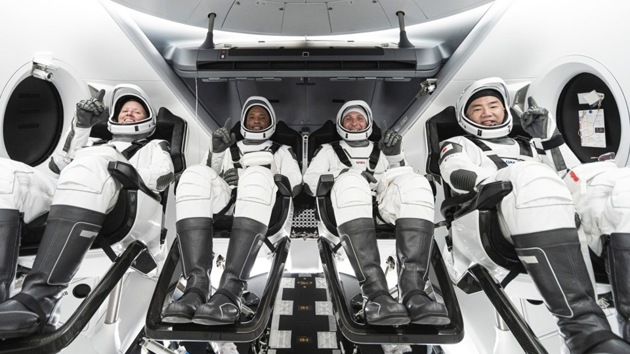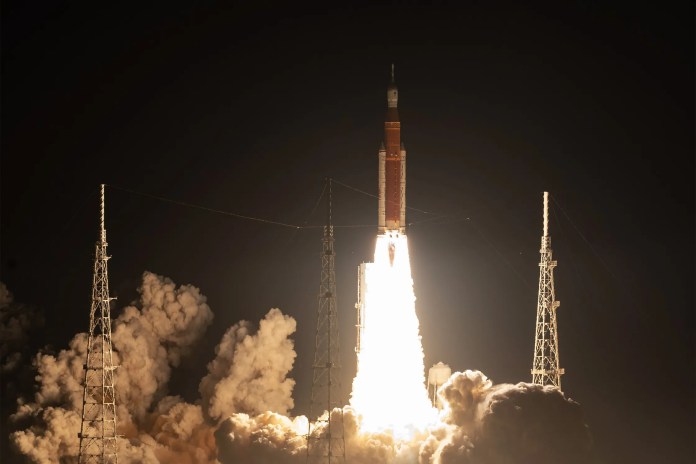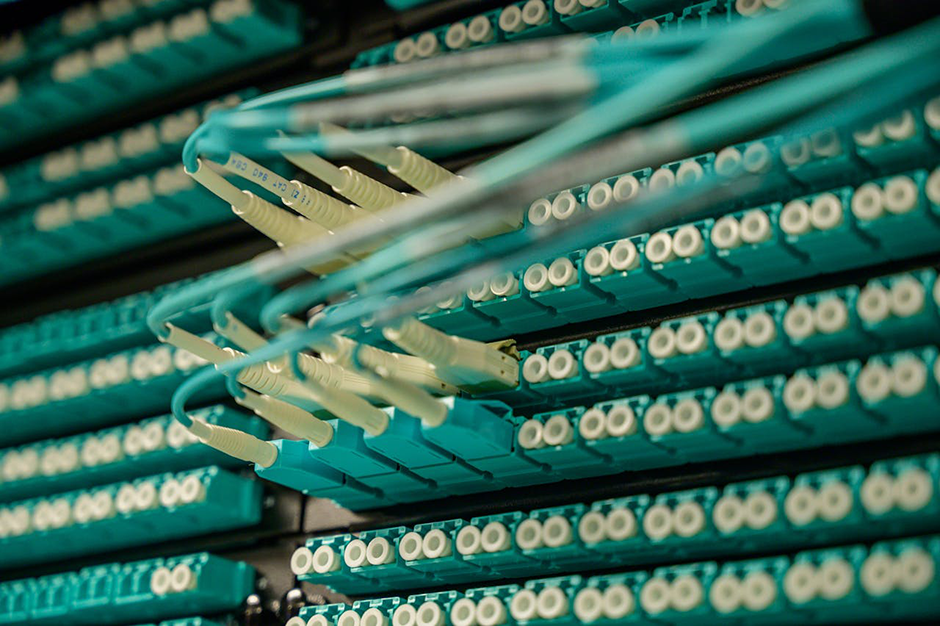






It is not uncommon for allies to become adversaries, especially in the realm of politics. Nevertheless, what might the implications be if the richest individual and the most powerful politician were to engage in a fierce confrontation? In a surprising turn of events and shifting allegiances, former buddies, United States President Donald Trump and billionaire Elon Musk, have begun to publicly attack each other, as their disagreement has escalated into a bitter verbal conflict.
Meanwhile, these war of words although occurring on media, social media and other platforms could have tangible repercussions. Trump issued a warning to revoke the governmental subsidies and contracts associated with Musk to conserve ‘billions of dollars in the budget’. As expected, the SpaceX CEO (Chief Executive Officer) also fired back.

He demanded the president’s impeachment, challenged him to withdraw funding for his companies and responded by declaring that he was hastening the “decommissioning” of his Dragon spacecraft. Notably, the National Aeronautics and Space Administration (NASA) depends on it to transport their astronauts and supplies to the International Space Station (ISS) as part of a contract estimated at around $4.9 billion. The capsule is the country’s only spacecraft that can fly humans in orbit.
In light of the President’s statement about cancellation of my government contracts, @SpaceX will begin decommissioning its Dragon spacecraft immediately pic.twitter.com/NG9sijjkgW
— Elon Musk (@elonmusk) June 5, 2025
However, Musk only made the statement to retract it a few hours later after a random user, named “Alaska” intervened to make peace between the two giants. The user described their altercation as “shameful” and told them to “cool off and take a step back for a couple of days,” alleging that they were above such behavior.
His remarks surprisingly seem to impact the owner of X, who labeled it as “Good advice” and conveyed that he will not move forward with his earlier declaration. He subsequently reshared a photo of the United States flag set against the backdrop of the Dragon, accompanied by the caption “Team America.”

Demissioning the Dragon: What it would mean
Interestingly, the decommissioning of Dragon would cause considerable disruption to the ISS program, which includes a multitude of countries participating in an international accord signed over twenty years ago. The only other crewed spacecraft capable of sending astronauts to the ISS is Russia’s Soyuz system.
On 22nd April, a Dragon craft brought 6,700 pounds of equipment, science studies and crew supplies to the ISS. Aleksey Ovchinin, a Russian cosmonaut, is currently leading a team of seven persons on a mission onboard the ISS. The crew consists of three NASA astronauts.
“NASA will continue to execute upon the president’s vision for the future of space,” posted Bethany Stevens, press secretary of the space agency after Musk’s threat. She added that NASA will maintain its collaboration with industry partners to ensure that the president’s goals in space are accomplished.
NASA will continue to execute upon the President’s vision for the future of space. We will continue to work with our industry partners to ensure the President’s objectives in space are met.
— Bethany Stevens (@NASASpox) June 5, 2025
It is notable here that it was SpaceX Dragon that brought Sunita Williams and Butch Wilmore back to Earth, after all efforts, especially Boeing’s Starliner failed to do so. The NASA astronauts were stuck in the ISS for over 9 months.
SpaceX enters the rocket industry
Elon Musk established Space Exploration Technologies Corporation (SpaceX), a tiny and obscure enterprise in 2002 with a lofty objective of sending humans to Mars in the future. It was awarded a NASA contract in 2006 to transport supplies and cargo to the International Space Station.
SpaceX had not yet sent anything into orbit at that time and it did not until two years later with its small Falcon 1 rocket. However, the company which was started by Elon Musk has since grown to be the foundation of all American spaceflight, both military and civilian.
It began in 2010 when the first Falcon 9 rocket was launched. The rocket began delivering supplies to the space station in 2012. The Falcon 9 was developed with funding from NASA and SpaceX. It used the NASA seal of approval to attract customers to launch their satellites with SpaceX. It offered launches and satellites in orbit at a lower cost than the majority of other rockets at the time and became the first priority.
SpaceX secured a contract to transport humans to the space station under the Obama administration. It undertook its first mission to the space station in May 2020 during Trump’s first term. While addressing an audience at Kennedy Space Center in Florida on 30th May of that year, he showered Musk with praise and celebrated the “groundbreaking partnership” between NASA and SpaceX.
Five years ago, @NASA_Astronauts Robert Behnken and Douglas Hurley launched to the @Space_Station aboard a @SpaceX Dragon spacecraft and Falcon 9 rocket. Our Demo-2 mission was the first time American astronauts launched on an American rocket from the U.S. in nearly 10 years. pic.twitter.com/V4C3ZG9ucm
— NASA (@NASA) May 30, 2025
He announced that the two has “given our nation the gift of an unmatched power a state-of-the-art spaceship to put our astronauts into orbit at a fraction of the cost of the space shuttle.”
President Trump: "Congratulations, Elon Musk."
— Michael Sheetz (@thesheetztweetz) May 30, 2020
"Today the groundbreaking partnership between NASA and SpaceX has given our nation the gift of an unmatched power, a state-of-the-art spaceship to put our astronauts into orbit at a fraction of the cost of the Space Shuttle."
SpaceX’s success caused its rivals to falter and now it dominates the space sector. The federal government currently depends largely on the company and its founder. There aren’t many alternatives available to the government for carrying people and cargo into orbit and beyond in the near future.
NASA and SpaceX: An interdependent relationship
Although SpaceX plays a major role in NASA’s space exploration and operations, the two organizations have a mutually beneficial relationship. SpaceX ranks among the largest federal contractors. NASA, the Air Force, and other organizations have awarded SpaceX more than $20 billion in contracts since 2008.
NASA Administrator Bill Nelson, the agency’s head and a former senator from Florida, stressed that “NASA is really committed” to commercial cooperation, reported CNBC. He noted that SpaceX received a key role in the agency’s Artemis plan, a proposal for using Starship to transport men to the moon’s surface.
It was the sole name check among the other NASA initiatives he highlighted that involve corporations, including private space stations and lunar cargo spacecraft. “You sit down with Elon Musk and he’ll tell you he would not be where he is if it were not for NASA,” Nelson asserted.
Starship will be used to land astronauts on the lunar surface on NASA's Artemis III mission, which will put the first humans on the Moon since 1972 pic.twitter.com/qLiRp0PSAp
— SpaceX (@SpaceX) November 19, 2024
SpaceX is the second-highest-paid vendor for the agency in fiscal year 2022, after Caltech which oversees NASA’s JPL (Jet Propulsion Laboratory). SpaceX is the only route for NASA astronauts to travel to and from orbit right now. Nelson emphasized, however, that the relationship is reciprocal.
“Elon will tell you also, in a moment of truth, that he had a lot of technical problems, as do all of them. And who do they come running to, to help them? NASA,” he pointed out. A representative for the business cited a 2017 remark made by Musk to illustrate SpaceX’s perspective. “I’m a big fan of NASA, in fact, at one point my password was ‘I love NASA.’ It does a lot of good things for which it doesn’t get enough credit,” the latter had expressed.
Today’s private spaceflight would look considerably different without NASA’s investment. SpaceX was close to going bankrupt and probably wouldn’t have had any money left without it. While the business now makes money from a wide range of clients, launching NASA science probes and transporting personnel and cargo to the ISS account for a sizable amount of its funding. The US Department of Defense also uses SpaceX to fly payloads.
How crucial is SpaceX for NASA and US Defense Department
NASA uses SpaceX Crew Dragon spacecraft to transport people and supplies to the ISS. It relied on Russia’s Soyuz for crew transportation when the Space Shuttle program terminated in 2011 until Crew Dragon went into service in 2020. SpaceX is one of two providers (with Boeing’s Starliner) for NASA’s Commercial Crew Program and has since carried out multiple crewed missions (such as Crew-1 through Crew-11).
Additionally, SpaceX manages a considerable portion of the Commercial Resupply Services (CRS) contracts for ISS cargo resupply via Cargo Dragon. SpaceX’s 30th CRS mission was completed in 2024 and the company has contracts that run through 2026.

NASA contracted other firms to deliver those services, allowing for an alternative in case of any complications. Boeing, the other company it authorized to launch men into orbit, has not yet finished repairs for its Starliner capsule following a test flight that left two NASA astronauts in orbit. After nine months in space, Sunita Williams and Butch Wilmore finally made it to Earth on a SpaceX Crew Dragon.
The next Starliner’s launch date has not yet been disclosed by Boeing or NASA, but it is expected to take place within the next year. Northrop Grumman, an aerospace and defence tech corporation, also has a contract to use its Cygnus spacecraft to transport cargo to the space station, however, the most recent Cygnus had to be discarded due to damage sustained during its shipping to Florida for launch. Sierra Space, based in Louisville of Colorado, has been contracted by NASA to deliver cargo but it has not yet launched its Dream Chaser spacecraft.

Hence, the future of the troubled and aging space station would be even more uncertain if SpaceX decided to decommission Dragon spacecraft. The likelihood that the company would at least return the Crew Dragon, which is presently docked at the space station and the four astronauts who depend on it for the journey home is very high. However, it would be unable to launch the upcoming crew of astronauts.
SpaceX critical for smooth operations at space station
“The Dragon spacecraft is capable of carrying up to 7 passengers to and from Earth orbit, and beyond,” according to SpaceX’s official website. However, in its absence the space station’s crew could be trimmed to three members, which is the maximum number of astronauts that a Russian Soyuz capsule can hold.
NASA will have to purchase seats for Soyuz from Russia, as it did from the time the space shuttles were retired until the start of Crew Dragon flights. Additionally, SpaceX has been contracted by NASA to construct the spacecraft that will return the space station to the atmosphere, allowing it to safely burn up over the Pacific Ocean when it is retired in 2030.
SpaceX even appears to have tapped on the growing need for affordable launch services and satellite-based communications to propel revenue growth, even as NASA continues to support scientific and deep space exploration missions. Launch costs have been drastically reduced by SpaceX’s reusable Falcon 9 and Falcon Heavy rockets, which have allowed the business to take a commanding lead in the worldwide launch industry.

NASA makes use of its own Space Launch System (SLS) for Artemis deep-space missions, nonetheless it is more expensive (up to $2 billion per launch) and is employed less frequently. On the other hand, Falcon 9 launches reportedly cost between $60 to $90 million per launch, which is far less than the cost of ULA’s (United Launch Alliance) Delta IV Heavy or SLS.
NASA has utilized Falcon Heavy for projects like Europa Clipper (launched in October 2024) and Falcon 9 for science missions including TESS, DART and Psyche. SpaceX became the most active launch operator globally in 2024 after completing 134 Falcon launches, a record-breaking accomplishment. The firm wants to meet the growing demand for satellite deployment by surpassing this milestone with 170 launches by the end of the year.
SpaceX’s significant part in mission to put humans on moon
NASA’s Artemis program leans heavily on SpaceX’s Starship to serve as the Human Landing System (HLS) for Artemis III and IV, which would land humans on the moon. In 2022, the company was presented with a $1.15 billion contract by NASA to build an improved Starship lunar lander and conduct a second crewed flight.
One year prior, the space agency declared that SpaceX’s Starship had defeated the other two bidders to secure the $2.9 billion contract for the construction of the Artemis lunar lander. The development of Starship is crucial because SpaceX’s capacity to produce a workable, reusable spacecraft is essential to the space agnecy’s current lunar landing timeframe of 2026.

“We have awarded SpaceX to continue the development of our integrated human landing system. We’re confident in NASA’s partnership with SpaceX to help us achieve the Artemis mission and look forward to continuing our work toward landing astronauts on the moon, to prepare for the next giant leap towards Mars,” informed Lisa Watson-Morgan, HLS program manager.
The goal of NASA’s Artemis program is to send the first woman and person of color to the moon. This will be the first time a human has set foot on the moon since the Apollo program’s last lunar landing mission in 1972. Blue Origin, the aerospace firm founded by Jeff Bezos, has secured a NASA contract for a lunar lander intended for astronauts.
However, this is scheduled for several years later, coinciding with the Artemis V mission. Therefore, the present program to send NASA astronauts to the moon in a few years also fails without SpaceX.
SpaceX’s role in security satellites and space exploration
Trump’s threat to cancel all of SpaceX’s contracts could render numerous federal government payloads stranded on the ground. NASA has granted contracts to the company to launch science missions, such as Dragonfly, a drone powered by nuclear that will circle Titan, Saturn’s moon. Furthermore, it frequently places secret American military and intelligence satellites in orbit around the planet.
SpaceX has been contracted by the Department of Defence to develop a more secure version of its Starlink internet satellites for military communications. Falcon 9 and Falcon Heavy rockets are facing competition from new contenders for these government missions. Both Blue Origin’s New Glenn rocket and United Launch Alliance’s Vulcan rocket had their debut launches earlier this year and last year, respectively. However, they are more expensive and don’t have the same track record of achievements as SpaceX.
Conclusion
There is no doubt that Musk’s SpaceX has played a crucial role in the space exploration and defence sectors of the United States. It also stands as one of the primary contenders for the construction of the ambitious “Golden Dome” project. However, it is also undeniable that this partnership has allowed the company to not only acquire billions of dollars but also to receive validation for its technological capabilities, which has significantly aided its success.
NASA is presently heavily dependent on SpaceX and is attempting to diversify and reduce their reliance on one company. However, this will take considerable time, as the company is significantly ahead of its competitors and is a distinctly dominant force in the field, despite its fluctuations and setbacks.














































